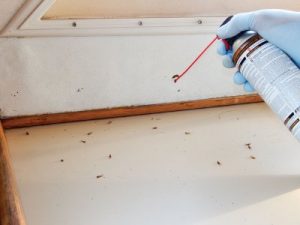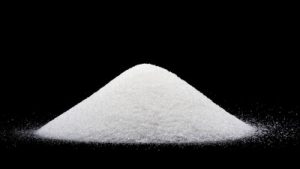
Termites are a destructive force that affects millions of households every year, bringing a money loss and property damage. Everyone who is living in the climate that is termite accommodating has a constant decision to make – how to protect my house from termites?
And the good thing is – there’re plenty of pre-treatments and prevention barrier methods that promise that the pest will never find the entrance to your building…
But what if you’re not that lucky and you got the building that already has termites? What treatment to choose? Many pest control operators offer foam treatment and it is also available as a DIY method in some stores. What is it and when the foam is the product to go for?
Hide content
- What termites the foam can be used against?
- How does the foam work?
- What chemicals are used for foaming?
- Useful articles
- Helpful video
- Conclusion
What termites the foam can be used against?
Well, most of the time, the professionals would recommend you to use the foam against drywood termite.
Learn more about drywood termites: signs of their activity; best methods of treatment: spot treatment and DIY methods; how to get rid of them in furniture?
Why? Let me explain you a little bit about this insect habits.
Drywood termites are American native species.
They do not need the moisture for living, (unlike subterranean termites) because their anatomy allows them to extract water from the driest pieces of wood.
Learn more about subterranean termites: signs of their activity; best methods of treatment and DIY methods. Eastern subterranean termites and their tunnels and tubes with photo.
They entering the structure with a swarm, when winged termites manage to find a nice untreated piece of timber in your house to nest in. It can be a chair, a doorframe or, in the worst case, structural elements. In the beginning, the colony is so small that you will hardly notice it, but soon enough you might see the first signals.
One of the mains signs that you have a drywood termite infestation are reappearing pellets of frass. Frass is the excrements of termite workers, that they kick out of the nest through the kick holes.
Now, what makes them perfect for the foam treatment? Let’s review it once again:
- they nest inside the wood itself, so once you found damaged wood you found the colony;
- they make galleries inside the timber and their kick holes are perfect entrances for the foam injection;
- they can have small colonies and fit all inside one piece of wood, or furniture if the infestation didn’t spread yet.
So, now you see, that the main thing is that this termite species nest where they eat, and if you manage to kill them there, they will not reappear, like subterranean termites would.
Important! Termite killing foam can be used as a complimentary measure against subterranean termites, hiding in the crevices and holes that they use as house entry point. But in case of subterranean species, the foam won’t be efficient enough, if used as only method of fighting.Here you can learn more information about another effective termite control remedies: Bora-Care, Boric acid, Borate, Fipronil, Chlorpyrifos, Chlordane, Borax, Timbor, Termidor, Terminator, Phantom, Lorsban, Biflex, Terro. You can choose different forms, such as – liquid, powder.
How does the foam work?
There’re two kinds of foam you can buy:
- In pressurized container.
- In form of liquid.
The cans with pressurized foam are usually not too big and resemble a shaving cream containers.
Those are the ones you can use yourself for the treatment of, for example, infested piece of furniture.
The liquids are there for the pest control specialists. Usually the companies have their own foamers, so they don’t’ need a ready-to use version.
The idea of foaming is quite simple. It can do exactly what liquid termiticide does, just better. The thing is, liquid solution is very hard to deliver in the core of the colony, liquid will not go up the termite galleries and fill all the space. The foam will.
Foam, accurately injected through the termites kick holes into the galleries, is expanding, sometimes up to 30 times its initial size. This pushes the foam through every corridor of the nest and makes it impossible for termites to escape.
Then, most of the foams are non-repellent, so they do not make termites to avoid it. Termites keep eating the wood, that is now poisoned with the termiticide that has a delayed action. Now, in few days, the whole colony will be dead.
The DIY versions can be killing termites on the spot, that makes them less efficient, because if they don’t reach the queen, the colony might survive.
Foams are not as watery as liquid termiticides and normally don’t damage the looks of the wooden piece or the wall, where it’s used. Usually, it has no unpleasant smell, except for slight soapy odor, so you will not need to evacuate the whole family for a week after treatment.Here you can learn more information about termite bait systems: Advance, Green, CSIRO, Nemesis, Exterra, Firstline, Terminate. Also find out how to make baits by yourself and how to refill them?
What chemicals are used for foaming?
There’re many different termiticides that can be foamed up, if needed.
Let’s go through the most popular ones within pest operators and customers.
Spectracide is mostly used in easy to get form of the pressurized can, and doesn’t cost more then 100$.
This aerosol can be used for the elimination of very small local infestation. The use of Spectracide is usually considered to be really safe, as it is one of the eco-friendliest chemicals in termite market.
When dealing with this aerosol you wouldn’t need any special protection, it is safe for pets and children (if they don’t eat it with a spoon). Spectracide is based on Cyhalothrin, this chemical causes paralysis of the nervous system of the termite. So this foam kills on contact and which make it less efficient than others in this list.
Termidor is very famous insecticide. Based on Fipronil it is not allowed to be sold to people that do not have special license. So if you choose this chemical for your infestation treatment you’ll have to order a pest control service.
Fipronil is known to be a highly toxic substance, especially to fish and marine invertebrates, this is why, in form of foam, it should be used in low dosage and preferably inside the walls.
This way it will not be exposed to outside weather and won’t be washed away into the environment. This foam is non-repellent and has a delayed action, eliminating the whole colony at few days’ time.
Premise is the other termiticide used by commercial companies for foaming. Its active ingredient is Imidalcloprid, a chemical compound resembling nicotine structure. It’s less toxic to the fish then Fipronil, but it can affect honeybees and other beneficial insects.
So, it’s not, strictly saying, eco-friendly, but if it’s used in form of foam the environmental damage will be minimal. Premise comes in form of small pre-packed container, so it’s not large enough for large scale treatment.
For this reason, the pest operators use unbranded Imidalcloprid with their foaming equipment for their purposes. It’s non-repellent and has delayed action just like Fipronil.
Important! When handling such strong chemicals as Fipronil and Imidalcloprid, it’s essential to use skin protection. Products based on those chemicals can irritate the eyes and skin, and are harmful if swallowed.
Optiguard products are also based on nicotinoid insecticide, in their case it’s Thiamethoxam. Comparing to other two serious termiticides listed before, this chemical is less hazardous to humans.
It doesn’t irritate the skin or the eye, and can be harmful only if swallowed. It is not toxic to fish but highly poisonous for midges and bees. This product is less used for termite foaming then Termidor and Premise, but also has its devoted fans.
Useful articles
If you interested in more information of termites we recommend you to read the following articles:
- All types of termites. Are they harmful to humans? Can they bite you? And what is the difference between drywood and subterranean ones?
- What does swarmers of different species look like: drywood, subterranean, formosan?
- Signs of infestation outside and in the house: in walls or furniture.
- How to treat them at home and in the yard: in wood or in fence. How long this process lasts and what is pre-construction and soil treatment?
- What does termite holes look like? What is droppings and is it toxic to humans? Do termites make noises?
- Posible termite damage, how does it look like? Examples of damage in walls and wood floors.
- All about flying termites: how do they look like, swarming season and what to do if there are swarmers in your house?
- How do they do nests and mounds? How to find it in your garden or inside the house?
- Termite life cycle – from egg to larvae. And social hierarchy: workers, soldiers, queen.
- Did you know that termites can infest living trees, for example a palm or a pine tree. They also like to live in stumps.
- You can prevent the infestation by using barriers, such as: HomeGuard, Physical systems, Safeguard, Stainless steel mesh, Kordon.
- If you want to get rid of termites naturally, learn more about such methods as: heat or cold treatment, orange oil, using nematodes.
Helpful video
How to Use Termite Foam:
Conclusion
Key points:
- Foam is more efficient way to apply the liquid termicide, because with expending it gets further and easier inside the nest.
- It can be used in form of DIY aerosol cans or trusted to professionals in case of serious infestation.
- This treatment is relatively eco-friendly, because it’s carried out indoors and without the chance that any wildlife will be exposed to the insecticide.
- The best results can be achieved if foam is used against drywood termites.
- Short list of the popular termiticides used for foaming by professionals include Premise, Termidor and Optiguard.

